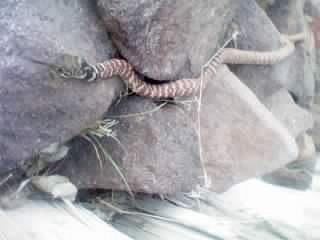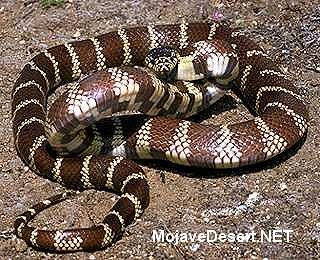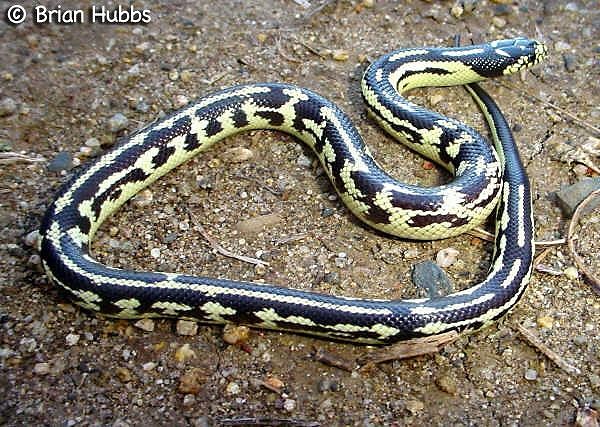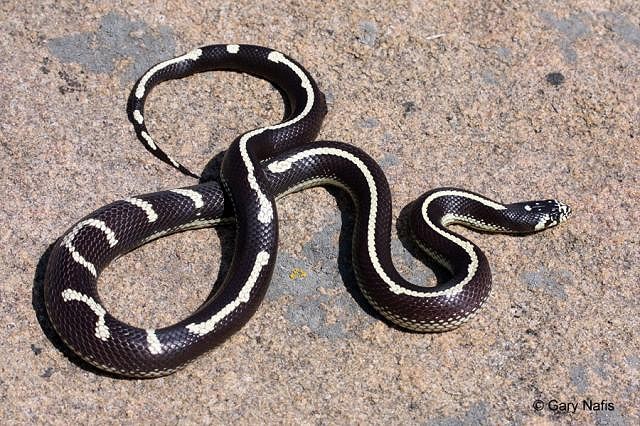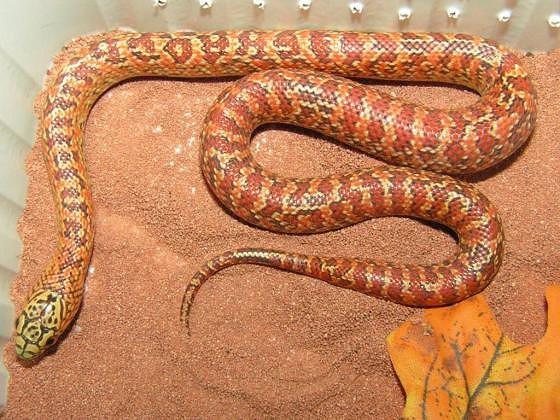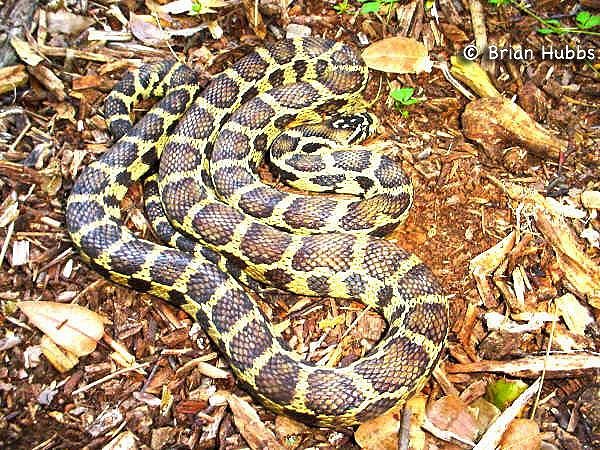Tiki Central / Tiki Carving / Buzzy's work: Lasciate ogne speranza, voi ch'intrate
Post #593128 by Bruddah Bear on Fri, Jun 10, 2011 5:36 AM
|
BB
Bruddah Bear
Posted
posted
on
Fri, Jun 10, 2011 5:36 AM
Okay, education time. Not necessarily a genetic freak, Cammo. But Mike is correct that cross breedings, correctly termed "intergrades," are not exactly a rare occurrence with many subspecies of Lampropeltis (Kingsnakes and Milksnakes).
From Buzzy's description, and from what I can make out in the photo, I'm betting that the snake in question is some sort of subspecies or intergrade of Lampropeltis getulus (Common Kingsnake), probably just a California Kingsnake with an aberrant pattern and therefore completely harmless to humans. A better pic would help to nail this guy's subspecies down. Lampropeltis getulus californiae (California Kingsnake) has a very wide range, over most of California (including San Diego), a small portion of Southern Oregon, the South Western third of Nevada, South Western portion of Utah, Western half of Arizona, down into Northern Mexico where the Colorado river meets the Gulf of California and the entire Baja Peninsula. L. g. californiae's color and pattern variations, just within it's own subspecies, are so numerous it can boggle the mind. There are banded patterns, ringed patterns, striped patterns, spotted patterns, AND to top that all off, combinations of these patterns have occurred. Colors can be black, various shades of brown, white, yellows, sandy colors and even albinism (albeit rarely occurring in the wild) producing a pale almost violet color. Just google or bing for images of Lampropeltis getulus californiae and you'll see what I mean. Have a look at this guy from the Mojave. :down:
Vs. this guy from Newport/Long Beach area :down:
Vs. this guy from San Diego County :down:
All the same Genus/Species/Subspecies Lampropeltis geulus californiae. Many other species and subspecies of Lampropeltis' ranges abut or overlap L. g. californiae's range. This is where intergrades can occur. Lampropeltis is a pretty forgiving Genus regarding intergrades between subspecies and the occasional cross-species intergrade. I'm wondering if one of his ancestors may haveintergraded with a subspecies of Lampropeltis zonata (Mountain Kingsnake), L. z. parvirubra (San Bernardino Mountain Kingsnake) is the most likely candidate as it's range is near Mojave. There is another subspecies or coloration "phase" of Lampropeltis getulus floridana (Florida Kingsnake) known as a "Brooksi" (Golden Phase) that can have patternation and coloring similar to a cornsnake, but California is on the other side of the country from it's range, so I doubt it's one of them. A domesticated specimen may have escaped or (stupidly) been set free. Who knows? I still doubt that's what we're looking at. Here's a pic of a "Brooksi." :down:
All this having been said, it is possible for Lampropeltis and other Genus snakes to crossbreed, I've seen examples online of intentional crossbreeds that professional breeders have made with Kings and Corns, but I doubt that could happen in the Mojave as Cornsnakes aren't in the wilds of California. Again, somebody could have turned one loose or let it escape, but again it's doubtful. But here's pic of a Kingsnake that probably crossed with Pacific Gophersnake in the wild found in Yolo County, Ca. :down:
So maybe an ancestor crossed with a local Gophersnake??? Anyway, here's a page with range maps of snakes in California listed by species with links to pages of example images. See if you can spot your snake. But the real point I want to make here is that he (or she) is a handy friend to have around. Lampropeltis have demonstrated that they are at least resistant, if not in some situations immune, to the bite of many venomous snakes in their ranges depending on the size of the snakes involved. Lampropeltis is also cannibalistic and has been known to eat other snakes including rattlers, copperheads and water moccasins/cottonmouths (hey Buzzy, how about a cannibal Kingsnake tiki?). They like to eat lizards in the wild, but have been known to eat small birds, bird eggs, and can help keep the rodent population down in rural areas. Don't mess with them as they can still bite if you try to handle them, they aren't used to it and will consider you a predator, plus they can carry parasites. They also will, as Mike wrote above, mimic behaviors of venomous snakes in their ranges, such as vibrate their tails or even coil like a rattler as a defense against predators, biting is a last resort. Otherwise, they have no reason or desire to bite you as you're way too big for them to eat. Their fangs are in the back corners of their mouths and are used for shocking their prey with the first hit and then holding onto it while they wrap around it, they have no venom as they are constrictors (they suffocate their prey, squeezing ever tighter every time their prey exhales, further reducing the amount of air it can inhale with each constriction) but a bite needs to be thoroughly cleaned so not to get infected, wild snakes' mouths aren't all that clean (domestic ones either for that matter). Why do I know all this about Lampropeltis? We used to have a beautiful Kingsnake we raised from a baby. She was a Nigitus or Mexican Black intergrade. Her mother was a pure L. g. nigritus (Mexican Black Kingsnake) that was bred to a male that was an intergrade himself, half L. g. nigritus, half L. g. splendida (Desert Kingsnake). She looked like a Splendida with thin yellow stripes on her back merging into a yellow and black speckled pattern on her sides with a yellow belly when she was hatched. She gradually lost her pattern as she matured, she was almost entirely black at full maturity except for yellow spots on her belly (gift from dad's side of the family) that showed she wasn't pure Nigritus. She grew to over 4 ft long, but due to the size of her tank and her feeding schedule she never got to be her dad's size. He was a big damn snake for a King. BTW, the folks we got our snake from also owned the monitor lizard that was in the movie "The Freshman," she was HUGE. Anyway, don't be scared of the snake, if it doesn't have a broad flat head and rattle, it's a good guy. Snakes are pretty much misunderstood creatures and many harmless snakes are killed annually by fearful yet uninformed people. Some may be spotted during "Going Primitive" so folks should be clued in to the differences between good and not so good snakes. Sorry for hijacking the thread, Buzzy. Okay, back to the tikis...
Bear :tiki: |

